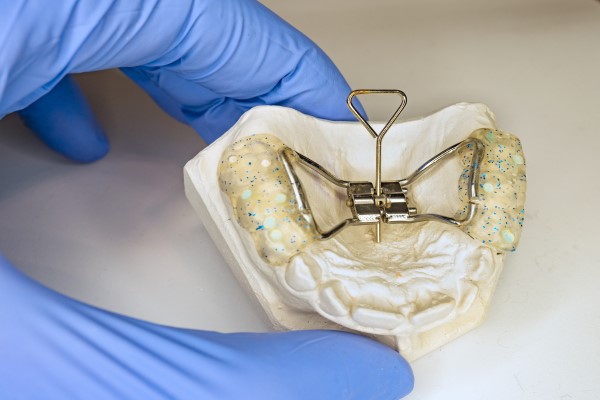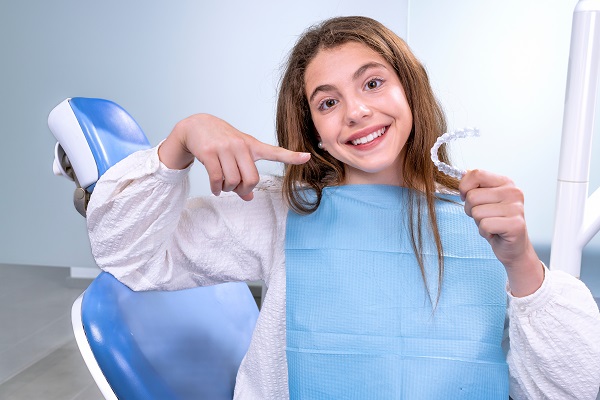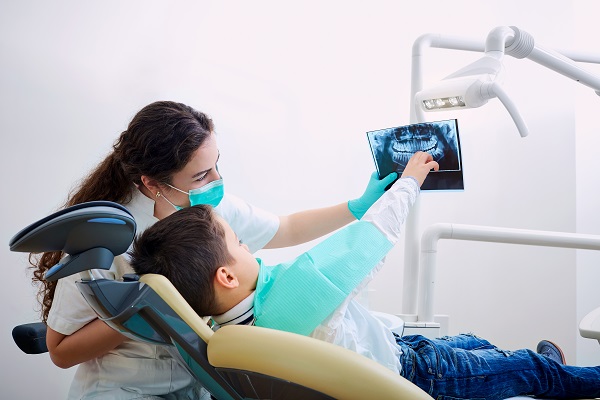Orthodontic Treatment for Underbite

One of the main goals of orthodontic treatment is to improve the bite pattern of patients, which may not be ideal due to an underbite, overbite, or another type of malocclusion. Orthodontists utilize various treatment techniques to help patients achieve more aligned teeth and jaw and better smile overall.
How to treat an underbite
By understanding the orthodontic treatment options available for underbite, patients can make an informed decision as to whether or not treatment is appropriate for them. The following are three common ways orthodontist effectively fix underbites, as well as overbites and crossbites, for their patients.
Braces
Braces have been a popular form of orthodontic treatment for decades, and it is still one of the most highly recommended methods for underbite correction. Braces work by pulling teeth into a more appropriate position over time. Orthodontists also utilize other techniques such as elastics along with braces to achieve more effective and efficient results. The length of the braces process ranges anywhere from six months to more than two years, depending on a variety of factors.
Invisalign
There are many advantages to choosing Invisalign® as a method of underbite correction. Invisalign works in a similar fashion as braces, although there are several noticeable differences. Unlike braces, which typically use metal wire that is highly visible and can only be removed by the dentist, Invisalign uses clear aligners, which are transparent and are easy to remove. Invisalign is more ideal for less severe underbites, whereas braces might be more suitable for more severe cases.
Appliances
Appliances are far less common than braces and Invisalign, although they are often incredibly effective. Several of the more common types of appliances for orthodontic underbite correction include expanders, retainers and headgear. An orthodontist might recommend one of these options for children, and appliances such as expanders are often utilized in multi-step orthodontic procedures. Appliances tend to be less comfortable and less preferred overall by many patients. For patients who prefer a fast underbite correction, appliances may be an ideal solution.
Surgery
Surgery is often reserved for the most severe instances of an underbite, but it is incredibly effective. Most orthodontists are qualified to perform underbite correction surgery. Each procedure is different, although the most common goals of an underbite correction surgery include either lengthening the upper jaw or shortening the lower jaw. The procedure may include the use of wires, plates and screws for the most effective results.
Learn more about orthodontic treatment
Orthodontists take pride in helping patients achieve a great smile. Your orthodontist can treat patients with an undesirable underbite that either causes cosmetic or oral health concerns. Everyone should be able to show off a smile they are proud of and not struggle from oral health complications due to an underbite. Feel free to reach out today to schedule a time to come in for an initial consultation, during which your orthodontist can determine what treatment options are most appropriate for your needs and preferences.
Request an appointment here: https://www.drsallysong.com or call The Orthodontic Center Of Wayne - Dr. Sally Song at (973) 696-5220 for an appointment in our Wayne office.
Check out what others are saying about our dental services on Yelp: Orthodontics in Wayne, NJ.
Recent Posts
Even though braces are common among teenagers, getting them is a new orthodontic experience for every patient. Teens and their parents tend to have many questions about braces and other orthodontic treatments for teens, when to get braces, and what having braces will be like. Here are some of the most common questions orthodontists hear…
The primary goal of early orthodontic treatment is to prevent and fix bite misalignments. Several causes, including genetics, the premature loss of primary (baby) teeth, and harmful oral habits (like thumb sucking) may lead to such anomalies. Orthodontic abnormalities might be congenital or occur during early childhood. Straight teeth can reduce the incidence of dental…
Invisalign® has changed how willing teenagers –– and everyone else –– are to start teeth straightening treatments. It provides an alternative to traditional metal braces that is virtually impossible to detect. Invisalign® treatments work the same way conventional braces work, the aligner trays exert a force on the patient's teeth pushing their teeth into better…
Oral health is foundational to good overall health. Through the help of an orthodontist and bite correction, difficulties with chewing or speaking can be overcome. The inability to ingest food or clearly articulate impacts both physical and mental health. Bite correction has the potential to change the course of an individual’s health and wellness.Changes in…


